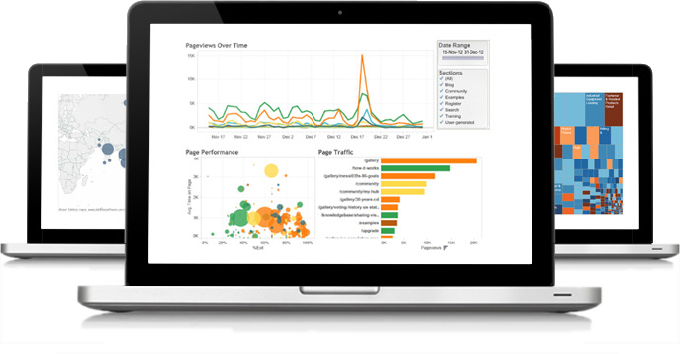Business analytics is comprised of solutions used to build analysis models and simulations to create scenarios, understand realities and predict future states. Business analytics includes data mining, predictive analytics, applied analytics and statistics, and is delivered as an application suitable for a business user.
Our cost-effective and comprehensive Business Intelligence (BI) and Analytics. services provide a foundation for insight and analysis to help you make more insightful business decisions, take bold action, and execute quickly.
Business analytics focuses on developing new insights and understanding of business performances. It touches every aspect of the business whether it’s analyzing financial data or gaining a comprehensive view of your customers. It provides us with the various tools and metrics for reporting and forecasting business behavior that can give a competitive edge to an organization providing simple, visual determinants of the business behaviors based upon which important strategic decisions are made.

ETL (Extract, Transform and Load) is a process in data warehousing responsible for pulling data out of the source systems and placing it into a data warehouse.ETL covers a process of how the data are loaded from the source system to the data warehouse. Currently, the ETL encompasses a cleaning step as a separate step. The sequence is then Extract-Clean-Transform-Load. Let us briefly describe each step of the ETL process.

Extraction :
The purpose of the extraction process is to reach to the source systems and collect the data needed for the datawarehouse.
The Extract step covers the data extraction from the source system and makes it accessible for further processing. The main objective of the extract step is to retrieve all the required data from the source system with as little resources as possible. The extract step should be designed in a way that it does not negatively affect the source system in terms or performance, response time or any kind of locking.
Transformation :
The transform stage of an ETL process involves an application of a series of rules or functions to the extracted data. It includes validation of records and their rejection if they are not acceptable as well as integration part. The amount of manipulation needed for transformation process depends on the data.
The most common processes used for transformation are conversion, clearing the duplicates, standardizing, filtering, sorting, translating and looking up or verifying if the data sources are inconsistent. A good ETL tool must enable building up of complex processes and extending a tool library so custom user's functions can be added.
Loading :
The loading is the last stage of ETL process and it loads extracted and transformed data into a target repository. There are various ways in which ETL load the data. Some of them physically insert each record as a new row into the table of the target warehouse involving SQL insert statement build-in, whereas others link the extraction, transformation, and loading processes for each record from the source.
The loading part is usually a bottleneck of the whole process. To increase efficiency with larger volumes of data we may need to skip SQL and data recovery or apply external high-performance sort that additionally improves performance.